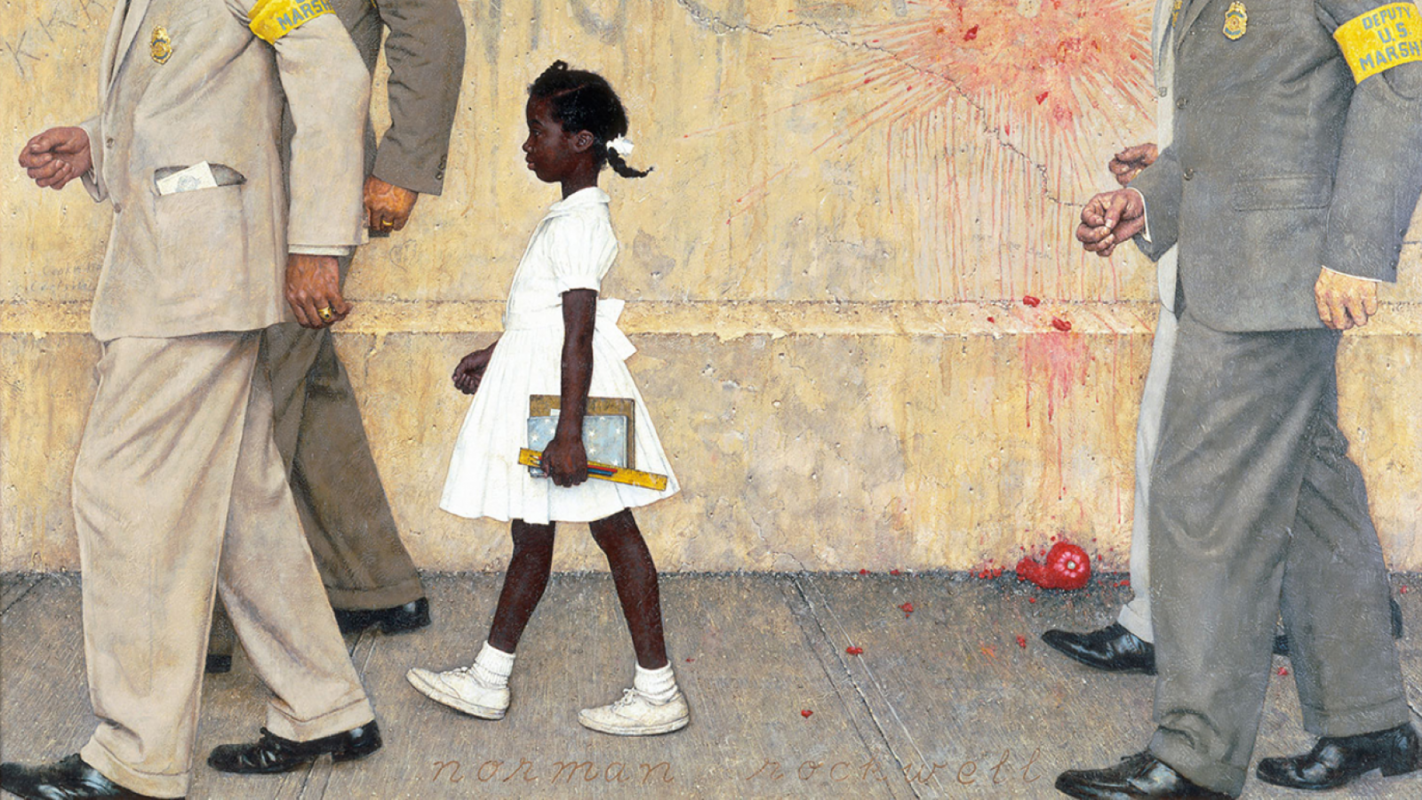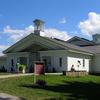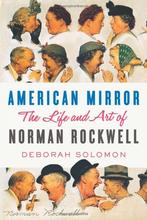More about The Problem We All Live With
- All
- Info
- Shop

Contributor
The Problem We All Live With is one of the most recognizable paintings in Norman Rockwell’s distinguished catalogue.
The painting is powerful because it depicts a moment that many actually lived through. Portrayed in the picture is a six-year-old Ruby Nell Bridges as she walks to her first day of school, marking her the first child to desegregate schools in Louisiana. The focus is undoubtedly on Ruby, who walks amongst the tall adults who are all but out of the frame except for their legs. If you look closely, you can see the splatter of a tomato thrown at Ruby, remnants of the N-Word, and two and a half K’s written on the wall, representing the Ku Klux Klan’s presence. This was different than just taking a photograph of the moment and capturing all of this in real-time. Though it was a recreation of that scene, Rockwell created this painting with intent, showing the world the ugly truth about what it’s like to be Black in America.
The actual event happened in 1960, but Rockwell didn’t depict it until 1963. With that time and distance, and coming from the mind and talent of someone as influential as Norman Rockwell, this painting, along with Ruby Nell Bridges and that fateful first day of school, became one of the defining moments and images of the Civil Rights movement.
This moment is powerful on its own, but it’s only compounded by the fact that it was painted by Norman Rockwell. This guy was literally the poster boy for the American dream and famous for his depictions of wholesome (white) slice-of-life moments. Painting The Problem We All Live With was a departure from that. We weren’t seeing our favorite baseball player lace up his cleats before a game, or a young boy discovering that his father is actually Santa Claus. No, Rockwell showed us the things that so many Americans tried to ignore. And his status meant that this was going to be seen by the masses, whether people liked it or not.
The Problem We All Live With was a sign that things were changing. As a society, we couldn’t afford to turn a blind eye to the things happening right in front of our eyes anymore. But it also was a sign that Rockwell was changing too. He had never created a work of art with civil rights or racial tension in mind before this, but after completing this work, he seemed to have made a concerted effort, painting Southern Justice in 1965, and New Kids in the Neighborhood in 1967, to name a few. The world couldn’t ignore these issues anymore, and Rockwell’s influence made sure that we wouldn’t.
Sources
- The Art Story. “Norman Rockwell Artworks” Accessed May 17, 2021. https://www.theartstory.org/artist/rockwell-norman/artworks/#nav
- Rose, Steve. “Ruby Bridges: the six-year-old who defied a mob and desegregated her school.” The Guardian. May 6, 2021. https://www.theguardian.com/society/2021/may/06/ruby-bridges-the-six-ye…
- Carson, Tom. “The awakening of Norman Rockwell.” Vox. February 26, 2020. https://www.vox.com/the-highlight/2020/2/19/21052356/norman-rockwell-th…
Featured Content
Here is what Wikipedia says about The Problem We All Live With
The Problem We All Live With is a 1964 painting by Norman Rockwell that is considered an iconic image of the Civil Rights Movement in the United States. It depicts Ruby Bridges, a six-year-old African-American girl, on her way to William Frantz Elementary School, an all-white public school, on November 14, 1960, during the New Orleans school desegregation crisis. Because of threats of violence against her, she is escorted by four deputy U.S. marshals; the painting is framed so that the marshals' heads are cropped at the shoulders, making Bridges the only person fully visible. On the wall behind her are written the racial slur "nigger" and the letters "KKK"; a smashed and splattered tomato thrown against the wall is also visible. The white protesters are not visible, as the viewer is looking at the scene from their point of view. The painting is oil on canvas and measures 36 inches (91 cm) high by 58 inches (150 cm) wide.
Check out the full Wikipedia article about The Problem We All Live With













